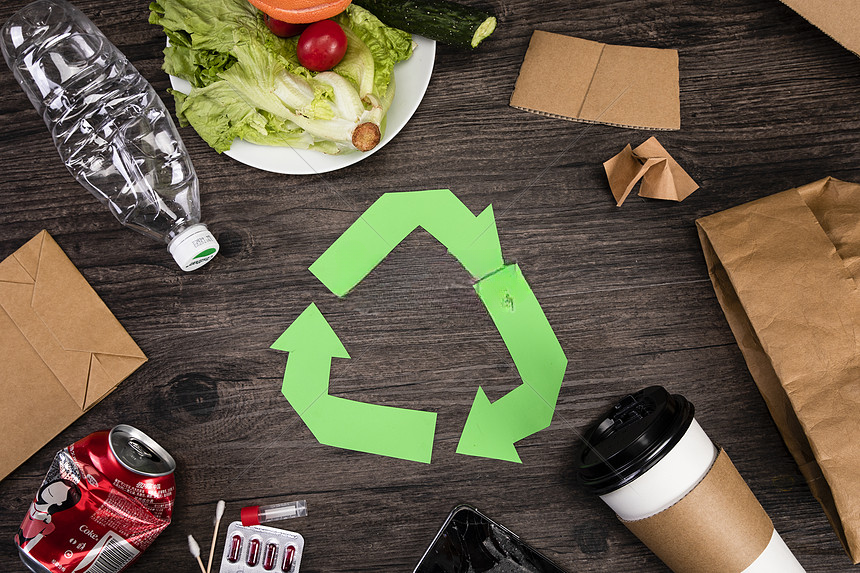Inorganic vs. Organic Waste: Why Understanding the Difference Matters
Ganyuan
2025 年 1 月 2 日

This article will tell you the difference between inorganic and organic waste, how each affects our lives, and what it says about the industrial development of our society.
What is the difference between inorganic and organic waste?
Inorganic waste: solid, liquid and gaseous waste that does not contain organic matter. In industrial and urban activities, discarded metals, plastics, glass and other materials composed of inorganic elements and compounds are inorganic waste, often containing metallic elements, silicates, etc. Inorganic wastes are stable and long-lasting and do not decompose easily.
Examples: glass, plastics, metals, masonry residues, ceramics, smelting slag, etc.
Organic waste: Today’s urban life produces more than 50 per cent organic waste, which refers to solid, liquid, gaseous and other organic substances that have lost their value for use or have been discarded, usually containing elements such as elemental carbon, oxygen, hydrogen and nitrogen, and originating mainly from agricultural production or biological wastes generated by natural cycles. It should be noted that organic waste is also generated by industrial processes such as chemicals, pharmaceuticals and resource extraction.
Examples: straw from agricultural production, animal manure, plant fibers, food residues, kitchen waste, sludge sewage, industrial organic gases, etc.
How are inorganic and organic wastes handled?
Inorganic wastes are stable and do not decompose easily, and usually require different treatment methods for different inorganic wastes.
Landfill: Inorganic wastes that have no utilization value and do not decompose easily can be disposed of in landfills, such as construction waste and waste glass.
Physicochemical treatment: Through certain physicochemical processes, the harmful components of inorganic waste are transformed and decomposed into harmless substances, and some of the separated substances can be recycled.
Incineration: Destroy the nature of inorganic waste through high temperature, decompose the components that can be used.
Curing stabilization: generally for industrial waste, toxic gases and liquids, curing treatment, can change its nature, reduce the outflow of harmful substances.

Organic wastes can be classified into a variety of treatment methods according to their treatment purpose, and the most commonly used treatment methods are composting, anaerobic digestion, incineration, and sanitary landfill.
Composting: By composting residual wastes such as food waste, paper, wood, etc., these organic wastes will decompose into a stable organic component, which will have a certain improvement effect on the soil, and the humus formed after decomposition can loosen the soil, provide fertility for soil plants, and effectively reduce greenhouse gases.
Anaerobic digestion: Anaerobic digestion technology is to dissolve solid organic matter into organic matter, which will undergo four stages: hydrolysis, acidification, hydrogen production and acetic acid production, and methanation. In anaerobic digestion, dissolution can occur at low to high temperatures, greatly improving the energy balance of the organic waste treatment process and providing greater economic and environmental advantages.
Incineration: Organic waste incineration needs to be oxidized and pyrolyzed at a high temperature of 800 to 1200 degrees Celsius to destroy the original components, and convert the harmful substances into harmless substances or reduce the amount of harmless substances, compared to composting, no need to consider the subsequent storage problem, which is the waste treatment method that is currently chosen more often.
Sanitary landfill: municipal waste waste for fixed place landfill treatment, which is the most economical way of waste disposal, but it should be noted that, in the landfill process, we should do the necessary protective measures, such as eliminating hazardous substances in the landfill, but also to consider the possibility of waste infiltration contamination of groundwater, etc., landfill operation is complex, difficult to manage, and to do a good job of preventive treatment of hazardous substances.
Recycling in the course of waste disposal methods
Whether it is inorganic or organic waste, the treatment can be judged according to the three types, but according to the study of reliable data, the recycling efficiency of waste in our cities is less than 50%, which is a problem that deserves public reflection.
Full recycling: For example, like glass, plastics and some metals can be directly recycled and reused through specific processes, which largely reduces waste.
Partial recycling: this kind of waste is generally decomposed through physical or chemical processes, after decomposition of harmless substances can be reused in industrial activities, harmful substances through certain means of treatment, sealing abandoned. For example, organic materials can produce large amounts of methane and other gases through high temperature or anaerobic digestion, which can be applied in urban life to reduce greenhouse gas emissions.
Completely discarded: This kind of waste generally has a large hazardous component or high stability, can not be decomposed, and has an extremely high treatment cost. For this part of the waste, direct landfill or solidification and other methods are the most economical and direct.
Impacts of improper handling of inorganic and organic wastes?
Environmental problems have become more serious
Improper disposal of inorganic and organic wastes can directly affect soil, air, water, plant and animal pollution and even death. Global warming has been an unstoppable trend in recent years. According to the latest UN report, concentrations of the three main greenhouse gases in the atmosphere – carbon dioxide, methane and nitrous oxide – reached record high levels in 2023. Once again, this is a wake-up call for mankind to protect the environment without delay.
Economic issues
The economic problems associated with the disposal of inorganic and organic wastes are mainly due to the high cost of recycling during and after the process.
Inorganic waste needs to be cleaned and sorted and transported during the treatment process, which requires high costs, and operating costs are also required later, which brings high economic costs.
Inorganic waste treatment requires the construction of composting sites or biogas power generation facilities, etc., which require specific equipment for treatment and entail large costs, and in addition, more than 50 per cent of inorganic waste generated by urban activities does not enter the recycling system, which also results in a huge economic waste.
Social Problems
With the increase of urban population, more and more garbage is generated from urban activities, especially commercial activities bring more disposable consumables, and the phenomenon of garbage besieging the city occurs in many areas, especially like some third world countries, which are far from being aware of garbage disposal. Improper disposal of wastes not only brings about the spread of germs, which threatens the health of human beings, but also encroaches on the land of the city, which leads to serious social problems.
Understanding the positive aspects of inorganic and organic wastes
Waste recycling and reuse is an important path to achieving the goal of sustainable development and has far-reaching significance. The rational management and utilization of waste not only effectively reduces damage to the natural environment, but also provides a new impetus for the efficient utilization of resources and the long-term development of the economy. Through waste recycling and reuse, we can significantly reduce the pollution problems caused by landfills and waste incineration, thereby protecting the Earth’s ecosystem. At the same time, this process maximizes resource potential, recycles limited natural resources and reduces over-reliance on raw materials.
In addition, waste recycling can become an engine for economic growth. For example, the establishment of a sound recycling industry chain and innovative technologies can not only create a large number of employment opportunities, but also stimulate the vitality of related industries and promote the development of the circular economy. By engaging in green production and resource reuse, more and more enterprises not only reduce production costs, but also shape an environmentally friendly brand image, injecting sustainable momentum into economic growth.
However, to truly realize the potential of waste recycling and reuse, the whole society must work together. Governments need to support waste disposal through sound policies and regulations, such as setting recycling targets, providing financial subsidies and strengthening enforcement. At the same time, the government needs to promote public education to enhance people’s awareness of environmental protection, so that waste separation and resource recycling can become a conscious behavioral habit for all. Enterprises also have an important role to play, as they can provide technical support and market support for waste treatment through the development of advanced recycling technologies, the construction of green supply chains and the promotion of environmentally friendly products. Individuals, on the other hand, need to develop green consumption habits, actively participate in waste separation and recycling, and practice the concept of sustainable development in their daily lives.


